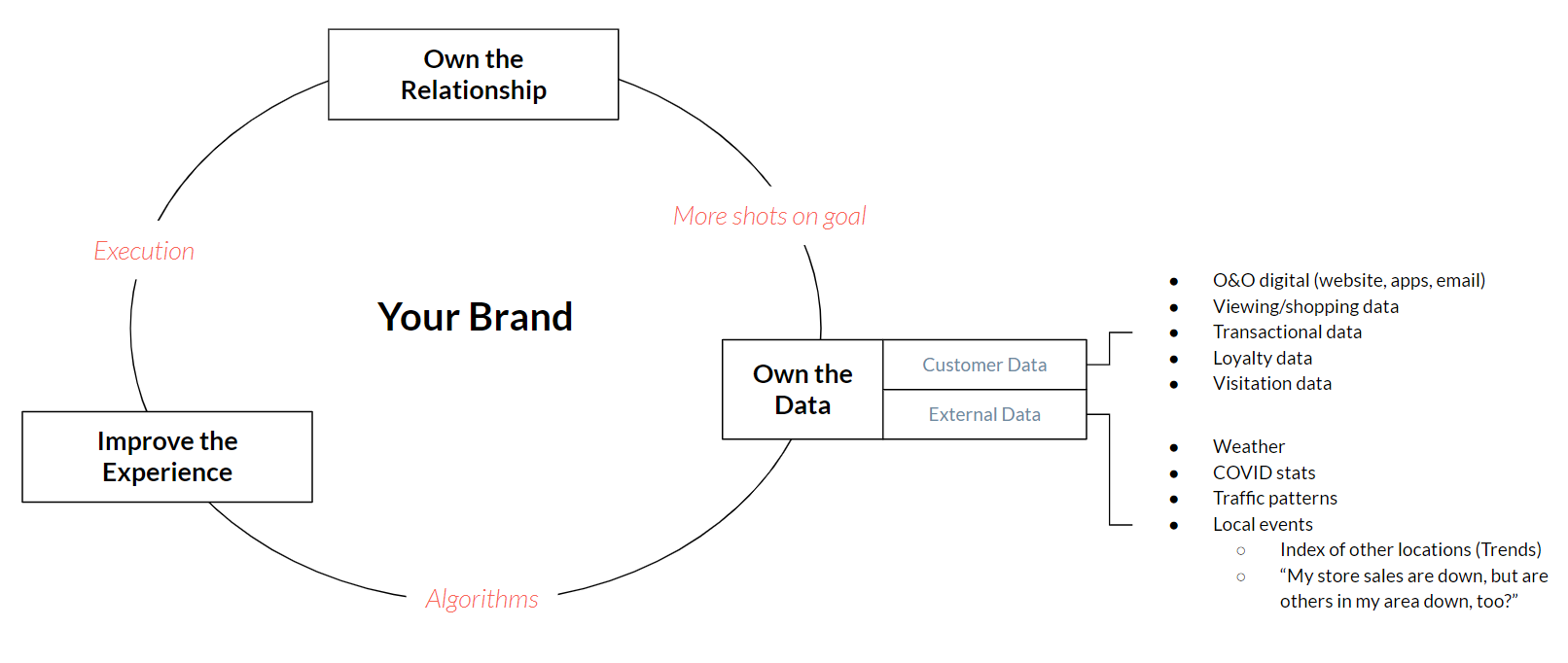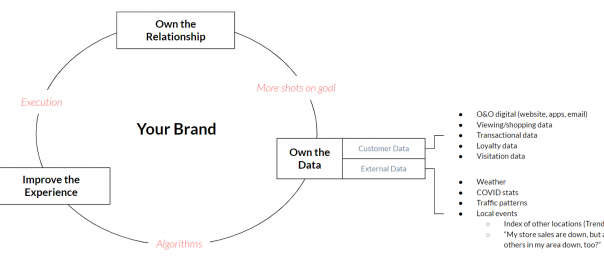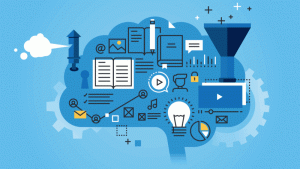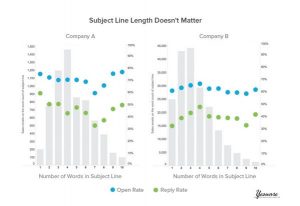There continues to be a disconnect between the digital and physical operations of most businesses. The pandemic has accelerated the adoption of technology that brings these worlds and datasets closer together, but there is still a large divide for many organizations.
For example, most restaurants, grocery stores, QSRs, and retailers don’t know who their customers are, even if they shop or dine there on multiple occasions. The anonymity of cash- (and even credit)-based transactions impede their ability to enhance the customer experience over time. The result is a mass market, one-size-fits-most approach to selling their goods.
The keyword in that second-to-last sentence is “transactions.” Without the ability to know who your customer is and connect data points over time, the relationship remains transactional. In the technology space, we know and understand the value of non-transactional (i.e. recurring or subscription) revenue. Why should more traditional businesses be any different?
I believe most companies can make the transition from transactional to more stable (and valuable), recurring revenue businesses if they focus on two key factors:
- Owning the Customer Relationship
- Digitizing Everything
Owning the Customer Relationship
Historically, knowing your customers meant actually knowing them: seeing them face-to-face, knowing their names, remembering things about their families, and memorizing their orders. This approach can work for small businesses but likely isn’t scalable for regional or national chains – especially in a post-pandemic world when most customers still aren’t going indoors.
Asking diners to drop their business cards in a fishbowl at the bar, adding a popup to acquire website visitors’ email addresses, or putting the mailing addresses of deliveries onto a physical mail distro scaled the approach. By building a list, businesses had a way to communicate en masse with their customers.
Today, owning the relationship is more complicated – but also more important – than ever before. There are countless owned and earned channels that prospects and customers can interact through: website, social platforms, mobile app, marketplaces, retailers (if you’re a manufacturer or brand), and more.
In my opinion, owning the customer relationship means two things:
- Making your owned and operated channels the easiest and best experience for your customers
- Working toward always logged-in experiences on those channels
Marketplaces like GrubHub, Doordash, OpenTable, and Expedia have long understood the value of the login. By knowing who their customers are, marketplaces are able to monitor usage, make recommendations, generate more data, and personalize each individual’s experience over time.
As Nick Kokonas, founder of the Alinea Group and CEO of Tock, puts it:
“OpenTable wants to own that relationship because that’s how they monetize it… yet I don’t know [which customer is coming in tonight.] I don’t know that your wife is left handed and likes tea. I don’t know that you’ve been to my other five restaurants 22 times because each restaurant is siloed as its own server.”
Once logged in, how can brands, retailers, restaurants, and grocers truly get to know their customers?
Digitizing Everything
At Gimbal, we have long been in the business of digitizing the physical world. And in that way, pieces like this can seem very self-serving.
However, fast-growth companies who are not (yet) Gimbal clients understand the value of digitizing their offerings, generating data, and providing frictionless experiences. In fact, they are key strategies for up-and-coming brands like Sweetgreen and proven players like McDonald’s, Starbucks, and Amazon.
As Sweetgreen CEO, Jonathan Neman, put it in a recent interview:
“You’ve got to give the consumer more and more reasons to transact digitally. And the reason we do it is because the combination of the digital relationship and the frictionless experience it provides, as well as the food that we serve, is just by its nature, habitual – because it’s healthy. Once we have you within the ecosystem, you go from a once in a while guest to pretty much a subscriber. It’s not a subscription yet; one day it can be.”
Today, 80% of Sweetgreen’s business is digital. That means for every five orders that are made, four of them are either placed online, through their app, or purchased in-store using their “Scan to Pay” functionality.
The result? A trail of breadcrumbs in the form of data for each individual customer that describes the relationship with the brand over time:
- What was ordered?
- When was it ordered?
- Where was it ordered?
- What ingredients were selected/left off their order?
- What dietary restrictions does this user have?
- Have they been more or less active lately?
- Have they ordered at multiple locations?
Data Powers Personalization
Imagine a scenario where you go into a Subway restaurant in Omaha, Nebraska today and another Subway in Trenton, New Jersey tomorrow. Both sandwich artists who prepare your meal – without asking – know that you like Italian Herb & Cheese bread and light mayo but hate tomatoes.
Now scale this experience across millions of customers and 45,000 locations around the country. Doing it “the current way” seems unrealistic because it is.
Problems like this are solvable and scalable with digital solutions, however.
McDonald’s understands this. “Digital” is one of the Three D’s in their growth strategy to become the leading omnichannel restaurant in all their markets. This focus on digital – the output of which is data – is also the reason they acquired Dynamic Yield in late 2019. The technology optimizes offerings on their exterior digital ordering systems based on each store’s local weather data. Not rocket science, but also impactful enough to justify the $ 300 million price tag.
The Shift from Transactional to LTV
Traditional retailers and QSRs market to get customers to walk into their stores, make a purchase, and then hope they’ll be back again. The whereabouts, browsing and buying habits, and buying history of their customers remain unknown until the next time they stop by.
Loyalty cards bridge that gap a bit but most generally track buying behavior over time. They still leave a significant gap in understanding the customer journey as not all visitors are customers, and not all customers are store visitors these days.
Companies like Rent the Runway – typically thought of as a clothing company – is mostly a data and technology company. Per Jennifer Hyman, in a 2018 interview:
“Rent the Runway is very much a technology business and always has been. In fact, 80% of our corporate employees are engineers, data scientists, product managers. We have very few people that are in what you would think are the traditional aspects of what Rent the Runway would be doing, which is merchandising and marketing. The first C-level hire that I made was a chief data officer, and he was in my first 10 employees. So from the very beginning of the company, we were thinking about data.”
Rent the Runway employs more developers and data scientists than stylists because the fashion decisions that are being made are based on data being generated by their current customers.
The takeaway: What started as a transactional business (“rent this dress for a single event”) evolved into a subscription model where customers can get up to 16 items per month for under $ 200.
Other companies have made the digital leap as well and are being rewarded for their efforts.
- Nike, formerly reliant on retailers as their main distribution channel, is shifting toward a DTC strategy.
- Disney previously monetized their massive content library via licensing agreements with cable companies, Netflix, and others. Today, that library is worth substantially more via subscription fees on Disney+.
- Starbucks’ 360-degree digital strategy (Wifi access, payments, marketing analytics, loyalty) has paid off in spades and now boasts one of the strongest loyalty programs in the country. As we mentioned in our latest whitepaper, the growth of Starbucks’ mobile app has represented a growing percentage of the company’s quarterly sales since its launch in Q1 2016.
The Digital Commerce Flywheel
This isn’t e-commerce. It is digitally-enabled commerce. The difference is that e-commerce assumes the sale is being made online. But today’s consumers don’t differentiate between the digital and physical worlds anymore. The phygital landscape allows them to shift between the two and decide which combination best fits their research, ordering, and fulfillment needs.

The canonical example of digitally-enabled commerce (a brand owning a relationship to generate more data and improve the experience) is Amazon. Today, traditional retailers with massive physical footprints like Walmart continue to flex their muscle and expand their digital offerings. Five months after launching Walmart+, data suggests subscribers to the new service hovers around 8 million. By becoming a go-to resource for customers, the brands who maintain customer mindshare, trust, and have a reliable method to deliver their offering to their customers will win.
Conclusion
Digital transformation is no longer a buzzword, it’s the “buzzworld” we are living in. Retailers are no longer in the business of traditional commerce; they are in the business of digitally-enabled commerce.
Companies new and old, traditional and digitally-native, product and media-focused, manufacturing and retail-based all have the ability to apply this framework to their business. The results will be profound. In the same way that Amazon has absorbed much of the market’s attention and demand, the grounds for niche brands and retailers to thrive remain fertile. The more customers you know, the more shots your organization will have on goal. The more data you have, the more learnings you’ll be exposed to. And the faster those learnings are applied, the more successful the company stands to be.
Digital & Social Articles on Business 2 Community
(51)
Report Post





